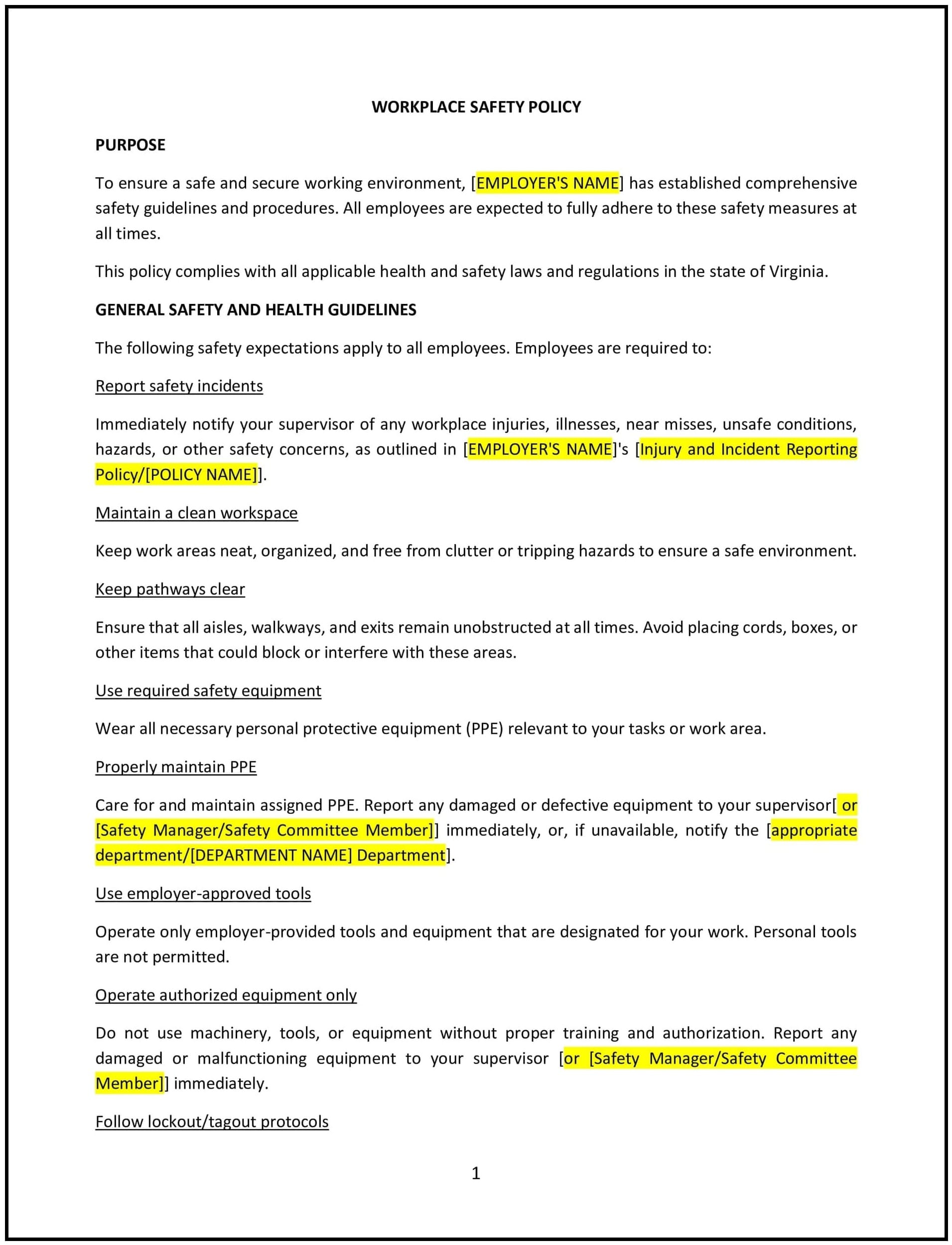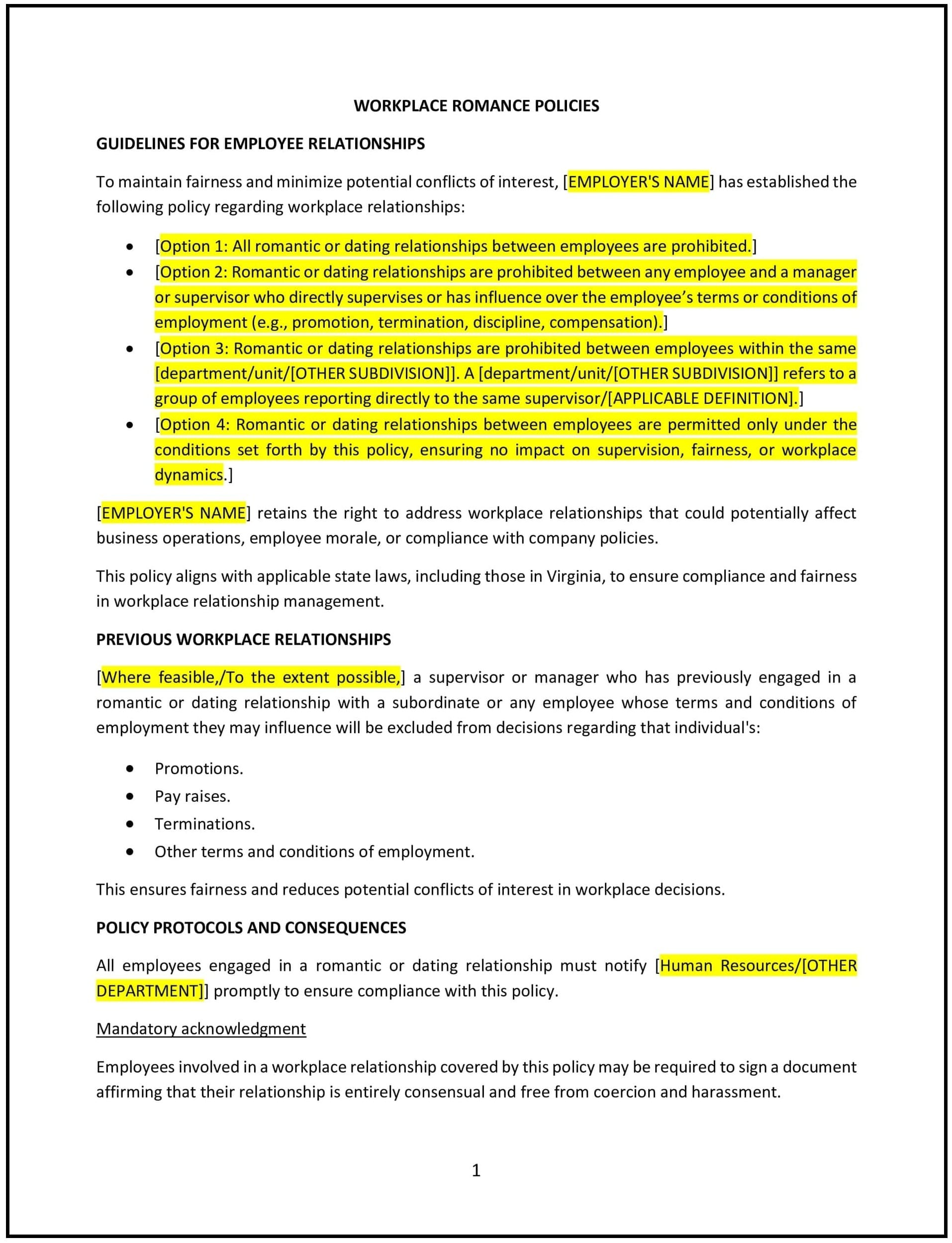Smoking in the workplace policy (Minnesota): Free template

Smoking in the workplace policy (Minnesota)
This smoking in the workplace policy is designed to help Minnesota businesses create a safe, healthy, and comfortable environment by regulating smoking in or around the workplace. The policy outlines where and when smoking is allowed, how it should be managed, and the responsibilities of both employees and employers regarding smoking behavior.
By implementing this policy, businesses can reduce health risks, improve air quality, and ensure that employees and customers are not exposed to harmful tobacco smoke while on the premises.
How to use this smoking in the workplace policy (Minnesota)
- Define smoking areas: Clearly specify where smoking is permitted, such as designated smoking areas outside the building, and outline any restrictions regarding smoking near entrances, windows, or ventilation systems.
- Establish no-smoking zones: Identify areas where smoking is prohibited, including inside the workplace, common areas, restrooms, and any areas where employees or customers may be exposed to secondhand smoke.
- Set guidelines for vaping: If vaping is allowed, outline where it is permitted and ensure it is treated similarly to smoking, specifying any areas or conditions for use.
- Define smoking breaks: Set limits on how often and for how long employees can take breaks to smoke, ensuring that breaks are managed in a way that does not interfere with work performance.
- Address tobacco use during work hours: Make it clear that smoking or tobacco use is not allowed during work hours unless during designated breaks or in designated smoking areas.
- Communicate the company’s stance on smoking: Ensure that employees are informed about the company’s policy on smoking and the potential consequences for violating the policy.
- Establish a policy for visitors: Specify whether smoking is allowed for visitors and how the policy applies to contractors, customers, or other non-employees visiting the premises.
Benefits of using a smoking in the workplace policy (Minnesota)
Implementing this policy provides several advantages for Minnesota businesses:
- Promotes a healthy workplace: By limiting smoking and secondhand smoke exposure, businesses can reduce health risks for employees and create a safer, cleaner work environment.
- Improves air quality: Designating smoking areas and limiting smoking indoors helps improve air quality for everyone in the workplace, contributing to overall employee well-being.
- Enhances employee focus: Clear rules on smoking breaks prevent interruptions to work schedules and help employees remain focused on their tasks during work hours.
- Reduces liability: By creating a comprehensive smoking policy that complies with Minnesota state laws, businesses can reduce the risk of liability related to smoking-related health issues or complaints.
- Reflects Minnesota-specific considerations: The policy is tailored to Minnesota’s specific smoking laws, ensuring that businesses are aligned with state and local regulations and that employees are aware of the company’s commitment to maintaining a smoke-free environment.
Tips for using this smoking in the workplace policy (Minnesota)
- Communicate the policy: Ensure all employees are aware of the smoking policy, including designated smoking areas, the consequences for violating the policy, and any specific rules related to smoking during work hours.
- Monitor compliance: Regularly monitor adherence to the policy to ensure that employees follow the rules regarding smoking breaks, designated areas, and other relevant guidelines.
- Provide support for quitting: Offer support to employees who want to quit smoking, such as resources, smoking cessation programs, or wellness programs designed to promote a healthier lifestyle.
- Review and update the policy: Periodically review the policy to ensure it remains aligned with any changes to state or federal regulations, company needs, or employee feedback.
- Encourage a smoke-free culture: Foster a workplace culture that supports the well-being of employees by promoting healthy habits and reducing exposure to tobacco smoke.
Q: Where is smoking allowed in the workplace?
A: Smoking is typically only allowed in designated smoking areas outside the building, away from entrances, windows, and air intakes. Businesses should clearly mark these areas and ensure employees understand where smoking is permitted.
Q: Is vaping allowed in the workplace?
A: Businesses should define whether vaping is allowed and whether it is treated the same as smoking. If allowed, businesses should designate areas for vaping and ensure it does not affect the comfort of other employees.
Q: Can employees smoke during work hours?
A: Smoking should generally be restricted to designated breaks and smoking areas. Employees should not smoke during work hours unless on breaks, to maintain productivity and minimize distractions.
Q: What happens if an employee violates the smoking policy?
A: Businesses should specify the consequences for violating the smoking policy, which may include verbal or written warnings, loss of smoking privileges, or more serious disciplinary action for repeated offenses.
Q: Can visitors smoke at the workplace?
A: Businesses should specify whether smoking is allowed for visitors and ensure that visitors comply with the company’s designated smoking areas. For example, visitors may be required to smoke only in outdoor, designated areas.
Q: How often can employees take smoking breaks?
A: Smoking breaks should be limited in frequency and duration to avoid disrupting work. Businesses should establish clear guidelines on the number of breaks employees are allowed to take per day and how long each break can last.
Q: How can businesses support employees who want to quit smoking?
A: Businesses should provide access to smoking cessation programs, resources, and support groups. Offering wellness programs and encouraging healthy lifestyle choices can help employees quit smoking and improve their overall health.
Q: How often should this policy be reviewed?
A: The smoking in the workplace policy should be reviewed at least annually or whenever there are changes to local, state, or federal smoking laws, or when employee feedback suggests that the policy needs updating.
This article contains general legal information and does not contain legal advice. Cobrief is not a law firm or a substitute for an attorney or law firm. The law is complex and changes often. For legal advice, please ask a lawyer.


